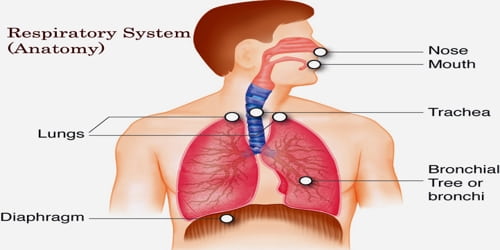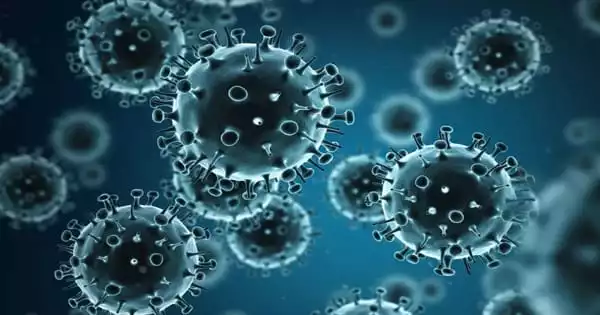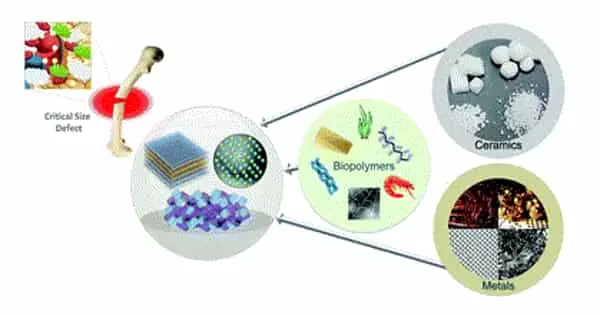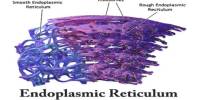Respiratory System (Anatomy)
Definition: The respiratory system (also referred to as the ventilator system) is a complex biological system comprised of several organs that facilitate the inhalation and exhalation of oxygen and carbon dioxide in living organisms (or, in other words, breathing). Most of the organs of the respiratory system help to distribute air, but only the tiny, grape-like alveoli and the alveolar ducts are responsible for actual gas exchange.
In addition to air distribution and gas exchange, the respiratory system filters warm and humidify the air we breathe. Organs in the respiratory system also play a role in speech and the sense of smell. It also helps the body maintain homeostasis, or balance among the many elements of the body’s internal environment.
In most fish, and a number of other aquatic animals (both vertebrates and invertebrates) the respiratory system consists of gills, which are either partially or completely external organs, bathed in the watery environment. Other animals, such as insects, have respiratory systems with very simple anatomical features, and in amphibians, even the skin plays a vital role in gas exchange. Plants also have respiratory systems but the directionality of gas exchange can be opposite to that in animals. The respiratory system in plants includes anatomical features such as stomata, that are found in various parts of the plant.
A properly functioning respiratory system is a vital part of our good health. Respiratory infections can be acute and sometimes life-threatening. They can also be chronic, in which case they place tremendous long-term stress on the immune system, endocrine system, HPA axis, and much more.
Anatomy of the Respiratory System: In humans and other mammals, the anatomy of a typical respiratory system is the respiratory tract. The tract is divided into an upper and a lower respiratory tract. The upper tract includes the nose, nasal cavities, sinuses, pharynx and the part of the larynx above the vocal folds. The lower tract includes the lower part of the larynx, the trachea, bronchi, bronchioles, and the alveoli.
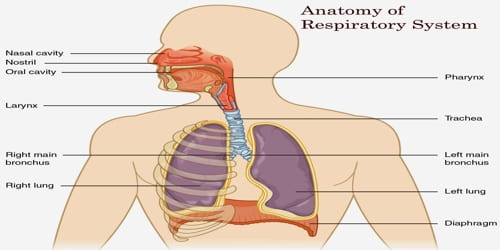
The respiratory system is divided into two main components:
Upper respiratory tract: Composed of the nose, the pharynx, and the larynx, the organs of the upper respiratory tract are located outside the chest cavity.
- Nasal cavity: Inside the nose, the sticky mucous membrane lining the nasal cavity traps dust particles, and tiny hairs called cilia help move them to the nose to be sneezed or blown out.
- Sinuses: These air-filled spaces alongside the nose help make the skull lighter.
- Pharynx: Both food and air pass through the pharynx before reaching their appropriate destinations. The pharynx also plays a role in speech.
- Larynx: The larynx is essential to human speech.
Lower respiratory tract: Composed of the trachea, the lungs, and all segments of the bronchial tree (including the alveoli), the organs of the lower respiratory tract are located inside the chest cavity.
- Trachea: Located just below the larynx, the trachea is the main airway to the lungs.
- Lungs: Together the lungs form one of the body’s largest organs. They’re responsible for providing oxygen to capillaries and exhaling carbon dioxide.
- Bronchi: The bronchi branch from the trachea into each lung and create the network of intricate passages that supply the lungs with air.
- Diaphragm: The diaphragm is the main respiratory muscle that contracts and relaxes to allow air into the lungs.
The major organs of the respiratory system function primarily to provide oxygen to body tissues for cellular respiration, remove the waste product carbon dioxide, and help to maintain acid-base balance. Portions of the respiratory system are also used for non-vital functions, such as sensing odors, speech production, and for straining, such as during childbirth or coughing.
The alveoli are the dead end terminals of the “tree”, meaning that any air that enters them has to exit via the same route. A system such as this creates dead space, a volume of air (about 150 ml in the adult human) that fills the airways after exhalation and is breathed back into the alveoli before the environmental air reaches them. At the end of inhalation, the airways are filled with environmental air, which is exhaled without coming in contact with the gas exchanger.
Functionally, the respiratory system can be divided into a conducting zone and a respiratory zone. The conducting zone of the respiratory system includes the organs and structures not directly involved in gas exchange. The gas exchange occurs in the respiratory zone.
- Conducting Zone – The major functions of the conducting zone are to provide a route for incoming and outgoing air, remove debris and pathogens from the incoming air, and warm and humidify the incoming air. Several structures within the conducting zone perform other functions as well. The epithelium of the nasal passages, for example, is essential to sensing odors, and the bronchial epithelium that lines the lungs can metabolize some airborne carcinogens.
- Respiratory Zone – In contrast to the conducting zone, the respiratory zone includes structures that are directly involved in gas exchange. The respiratory zone begins where the terminal bronchioles join a respiratory bronchiole, the smallest type of bronchiole, which then leads to an alveolar duct, opening into a cluster of alveoli.
Homeostatic Control of Respiration: The last physiological role of the respiratory system is the homeostatic control of respiration or, in other words, the body’s ability to maintain a steady breathing rate. This is termed eupnea. This state should remain constant until the body has a demand for increased oxygen and carbon dioxide levels due to increased exertion, most likely caused by physical activity. When this happens, chemoreceptors will pick up on the increased partial pressure of the oxygen and carbon dioxide and send triggers to the brain. The brain will then signal the respiratory center to make adjustments to the breathing rate and depth in order to face the increased demands.
Clinical significance of the Respiratory system:
Disorders of the respiratory system can be classified into several general groups:
- Airway obstructive conditions (e.g., emphysema, bronchitis, asthma)
- Pulmonary restrictive conditions (e.g., fibrosis, sarcoidosis, alveolar damage, pleural effusion)
- Vascular diseases (e.g., pulmonary edema, pulmonary embolism, pulmonary hypertension)
- Infectious, environmental and other “diseases” (e.g., pneumonia, tuberculosis, asbestosis, particulate pollutants)
- Primary cancers (e.g. bronchial carcinoma, mesothelioma)
- Secondary cancers (e.g. cancers that originated elsewhere in the body, but have seeded themselves in the lungs)
- Insufficient surfactant (e.g. respiratory distress syndrome in pre-term babies).
Disorders of the respiratory system are usually treated by a pulmonologist and respiratory therapist.
Information Source:
